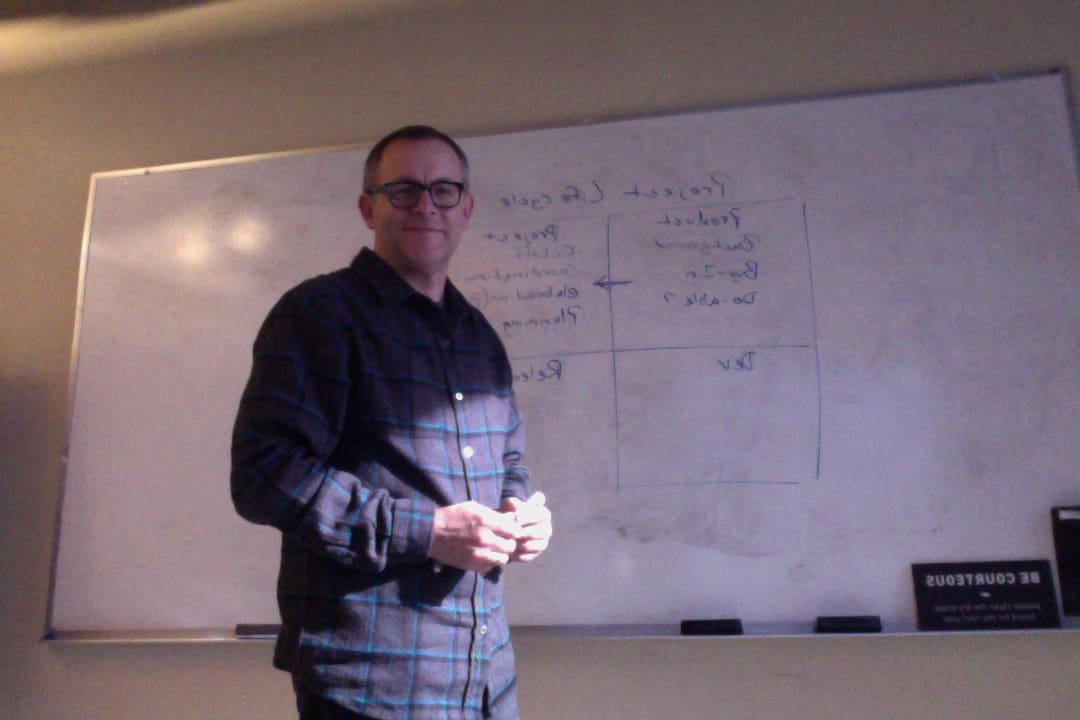Lulu: The Way to Self Publishing

If you’re an English teacher or writing teacher, you should seriously consider having your students publish their works online. E-publishing is the new paradigm in the publishing industry. A handful of companies were early adopters while the rest are now playing catch up or are getting ready to disappear.
Students approach writing projects very differently when their final product is published for peer review. All of the sudden, things like grammar, style, and content become important (relevant) to them. When a student’s work is published online where that incredibly influential group know as “peers” can comment on and “like” the article, then students have much greater motivation. As educators, we need to harness the power of student peers and usher students into the real world.
You can simply publish student work online locally like a blog post, or you can take it up a notch and literally publish through an e-publishing site.
Lulu.com is a great place to start. Lulu has empowered authors worldwide to publish their works online with its open publishing platform. Content creators can publish their works free to readers online or they can sell their works in both e-pub and print format. Lulu’s Author Spotlight allows writers to highlight their body of work on Lulu with a home page, which is perfect for students who want to showcase their work for colleges or future employers. Lulu has a Educator’s page with various solutions for K-12, high ed, and school administrators.
[youtube http://www.youtube.com/watch?v=-lg_B8LgyYg&w=560&h=315]
I had the opportunity recently to sit down with Arjay HInek, a software project manager at Lulu.com, which has its headquarters in the Research Triangle in Raleigh, North Carolina. We had the chance to discuss the e-publishing business and how the Gen Z learners are taking advantage of that. Here’s our conversation:
Adam: I didn’t realize, Lulu has been around for 10 years now.
Arjay: Yes, we celebrated our ten-year anniversary back in February, and I’ve been with Lulu for just over a year.
Adam: Can you get on an internet wayback machine and see what Lulu looked like ten years ago? I imagine the changes have been big.
Arjay: They were pretty bare bones in the early days. We’re actually on our second generation user interface. But typical of any internet company, the third generation user interface is usually the one they are the most successful with. The first generation is, “we’re working out the wrinkles.” The second is, “well, we’re building a platform and we’re going to try a few things to get bigger,” and then the third one is, “let’s build it on a platform that has scalability.”
Adam: Yes, that sounds pretty much like the pattern that I’ve seen in my own work environments. Can I describe Lulu as the place where people can go to publish the next great American novel?
Arjay: Right, yes, it’s an excellent place to experiment with your writing and get it out there. If you’re an author who wants to see how your work looks in its completed form, and you want to sell it, as well, then Lulu is perfect. Our model is not to have a stable of eight or nine authors who sell a million copies, but to have a millions of authors who might sell one copy.

Lulu Software Project Manager
Adam: There are a lot of unknown writers out there who have not yet been published, but other than that, they are every bit a writer. They do everything that an established, published author does, in terms of writing. Does Lulu legitimize what they do?
Arjay: Absolutely, yes. This is the great democratization of writing. Instead of waiting for some magic gatekeeper to accept them, people can publish when they are ready, and in turn, we get to see new and different things that we might never see in a bookstore. It’s a really interesting and exciting form for writing and publishing. We don’t print massive numbers of books. When people sell their book through us, that order goes out, and we print on demand, or POD. So instead of giant warehouses of books, it’s just POD, which is obviously more green because you don’t print a book that’s wanting to be consumed. That, in its own right, has been an exciting reason to work here.
Adam: One of my complaints with the publishing industry is that even once you get through their gatekeepers, then you have to go through their editing process, and it really extinguishes an author’s voice. Everyone ends up sounding like about twelve editors out there.
Arjay: Yes, the witty voice sounds just like every other witty voice. What’s funny about this, and it’s a criticism that I often hear before people have been exposed to us is “oh, you get a lot of really horrible writers and a lot of garbage.”
Adam: Right, because the old way never gave us any bad novels, right? I never spent money on a bad book before.
Arjay: Right, good point. It’s a lot like the peer pressure of the internet. Everything is peer reviewed here, and we really encourage that. Also, our books are cheaper. Lulu takes a very small cut on print book sales, 20%, to encourage authors to sell more quantity.
Adam: You would never get that return as an author in the traditional publishing world.
Arjay: Interestingly, a number of writers are not looking to make much or any money. They’re looking for a following. They are mostly e-publishing with us, and they will sell their books for a dollar or even make them free. Some may start to charge once they build a bigger fan base.
Adam: What’s Lulu’s percentage on e-pubs?
Arjay: Just 10% for e-pubs.
Adam: So as an author you are really getting a great deal on e-pubs. Where else are you going to get 80% for print and 90% for e-publishing? This is definitely a form of publishing that’s not going away. The Barnes and Noble CEO said that he never reads print books any more. He just reads e-pubs.
Arjay: Well, look at me. I used to be quite the luddite, thinking this whole Internet stuff might not work out, and now I’m a software project manager, and I read my books on a Kindle, and promote the democratization of publishing.
Adam: Does Lulu consider itself a tech company or a service company or a content company?
Arjay: That’s the million dollar question. For the first few years, Lulu considered itself a software company. But now Lulu is looking to branch out more. We’re keeping our core business that allows people to publish their books online, but we’re also looking at moving into more contemporary applications of the photo book industry that allows for collaborative publishing and then also into a larger service role with cover design, editing, formatting, and marketing, all done la carte or in bundled packages. This helps authors dig deeper into their writing. We used to have a smaller service that helped people with editing and marketing, but it wasn’t our core. We aren’t a vanity press, but we want to go deeper in 1-on-1 with authors to help produce higher quality work. Anyone who writes knows that it helps to have others go through your work before you publish.
Adam: One group that I’m interested in is the Gen Z crowd, that group of kids who’ve never not known the Internet. I suspect they will embrace the e-publishing format.
Arjay: I’m curious about them, too. Lulu is like lightning speed compared to the traditional publishing industry, but we’re not instant like Facebook where you “publish” and you get instant peer feedback. We still have a process. So I’m curious about how the Gen Zs will embrace this. And they have, just not in the numbers as the adult crowd.
Adam: Yeah, they’re young maturing authors. They aren’t big sellers in the traditional markets either.
Arjay: What I find is a great avenue for many them is our graphic novels and comics market. We see a large number of Gen Z Anime-type authors there. They typically use software to generate their graphics, and they create a lot of interesting stories. What’s fascinating about it is that it’s sort of like the art wall in grade school where the art teacher would sponsor a contest, but only the kids who could actually draw would enter and everyone else would stay away. But now, software makes it easy to manipulate and create objects and all types of Gen Zs are putting their works out there. So Lulu is either the cool secret place that really hip kids know about or the place for the complete nerds. I can’t tell which.
Adam: Ha, I think both.
Arjay: In the art world, they are both one and the same.
Adam: Yeah, at the state virtual school, one of our most popular courses is Japanese, and it’s so popular that the course is always maxed out in capacity. I think if we could take a Boeing 747 to Japan and load up with teachers, we would max out those sections, too. And this is just for North Carolina students. And one of the main reasons for this interest is Anime.
Arjay: Absolutely not surprised by that. Still, though, what’s heartening is that they still have to know “story” regardless of their art. You can tell the authors who having studied the art of the story. If they’ve not, it falls flat. If they have, it’s reflected in their peer reviews.
Adam: I’m working working with some young writers now, and it’s pretty much how you laid it out. If they’ve studied the art of story, their writing goes pretty much from unreadable to enjoyable.
Arjay: Yeah, I didn’t want to say “unreadable,” but that’s accurate. Of course, they have a novel out there, and I don’t! Nevertheless, we’re still looking for greater Gen Z participation.
Adam: And the Gen Z crowd, so many of them have writing teachers who are fairly traditional, and some definitely from the Old Guard who have not embraced e-publishing and don’t lead students down that avenue.
Arjay: That needs to change. I would love to go to every high school English teacher and tell them it’s a different world now. There’s still value in studying great literature, but writing assignments need to change. Have students do an e-pub, and have them review each other.
Adam: Think about all the English classes across the country. There’s probably some fantastic stuff written in those classes out of the millions of kids out there. And think about this, one person sees it. The teacher. And it might not even get passed back to the kid, and the kid later forgets about it. That seems like an unfortunate crime. Why not e-publish that and let the world see it?
Arjay: We have a short story contest each year, and those are submitted as e-pubs. I was one of the judges last year, and what a wonderful experience. To see what people put out there for a competition that could be read by millions of people was fantastic. Their effort was incredible.
Adam: I think that completely changes the students’ efforts and view on the project when that happens. When they are writing for the teacher, they will do it just good enough, either good enough to pass or good enough to get whatever grade they are seeking. But when they write for their peers, they want it to really be good. They want good peer reviews. That is valuable to them, and they will put a better effort into their grammar, their structure, their technique.
Arjay: Teachers, too, could take a collection of students’ work on a project and publish a traditional print book with us at a very low cost. Students definitely get a charge out of seeing their work in print and grouped with others writers.
Adam: I agree, to see their rewards of “doing” something is much more relevant and reflective of the world outside of school.
Arjay: Yes, it’s a good way to show a portfolio of your work. It’s very easy to pull up your entire body of work.
Adam: Okay, well thanks for your time. When I’m in the area, can I get a tour of Lulu?
Arjay: Absolutely, yes!




0 Comments
Leave a Comment
Your email address will not be published. All fields are required.